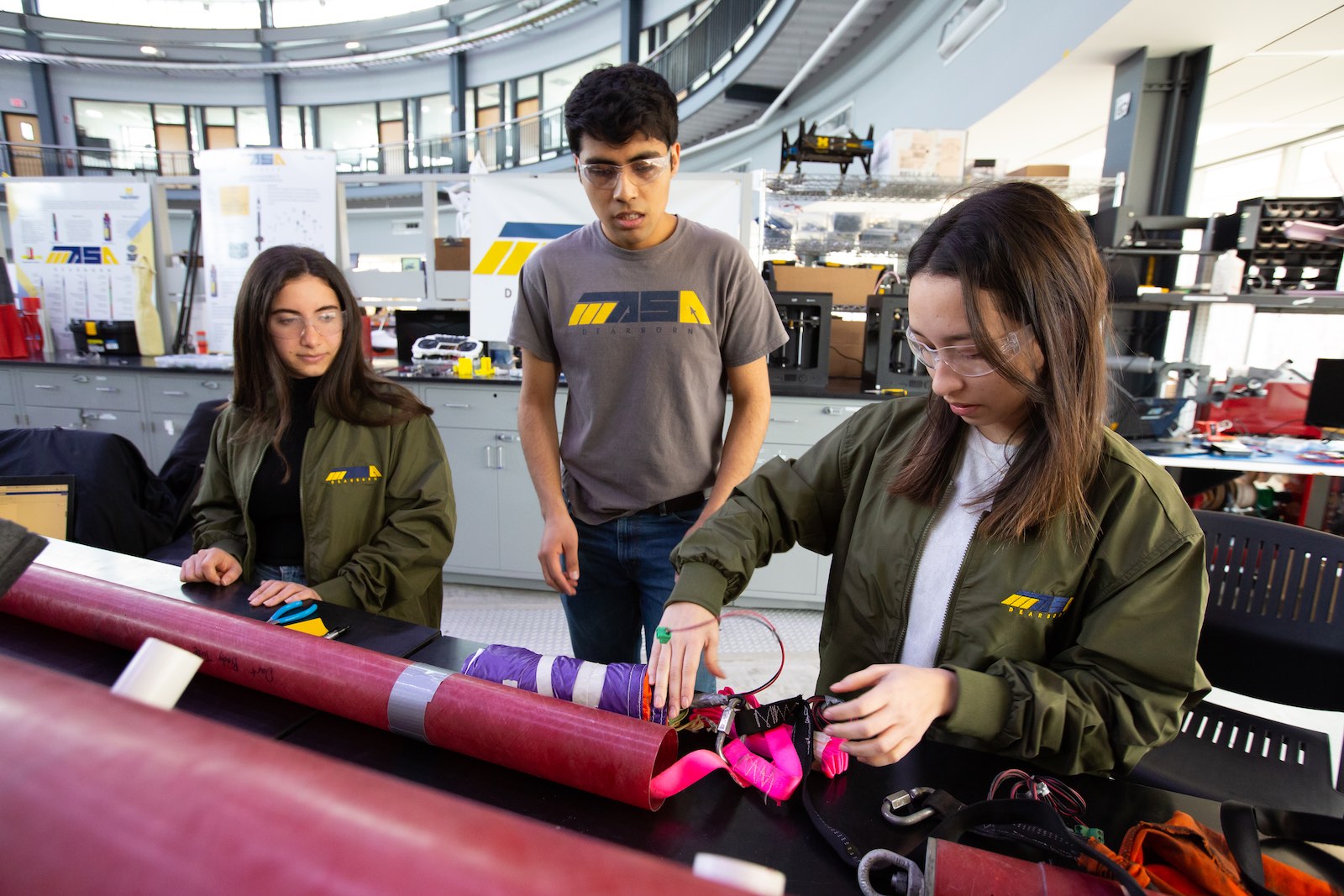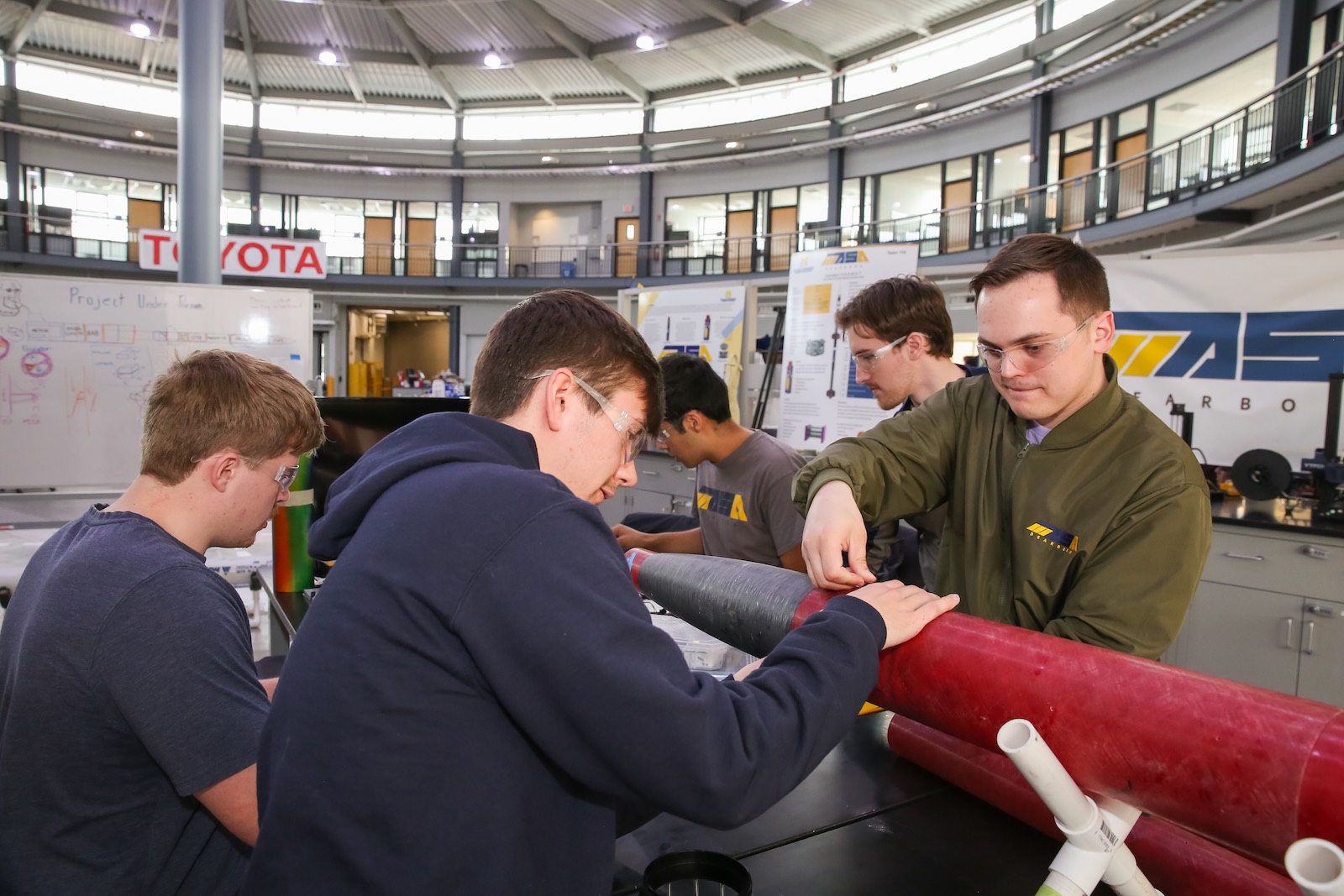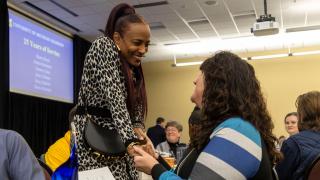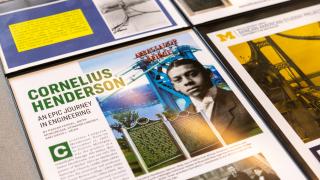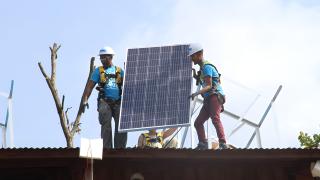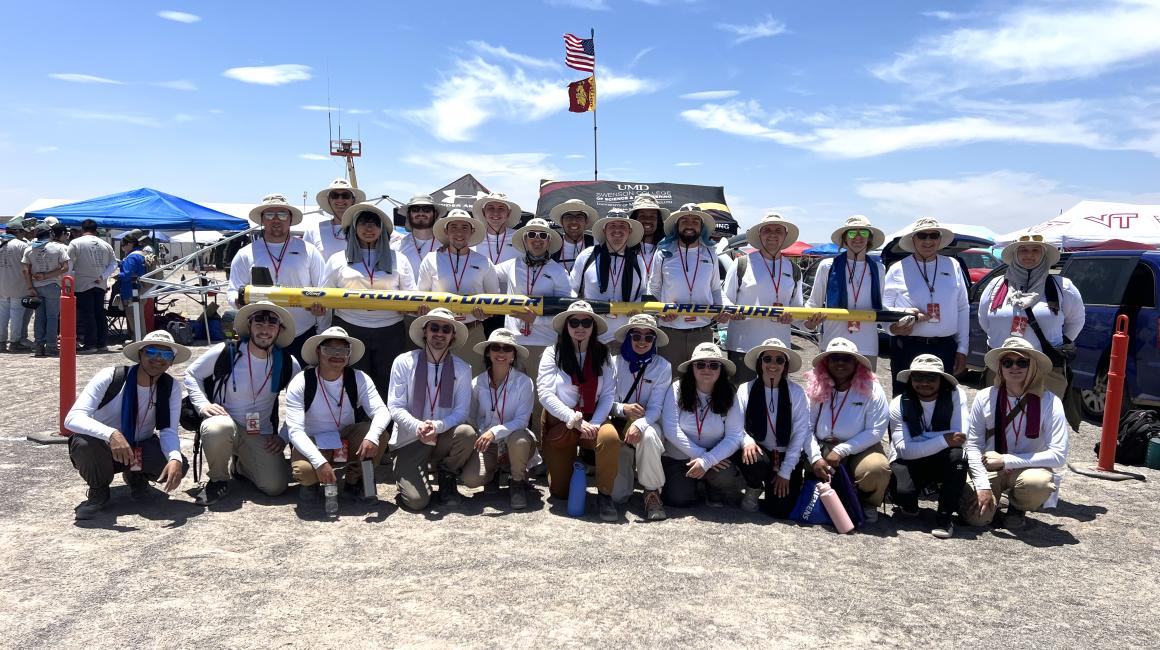
Bags packed and ready from the night before, it was 4 a.m. when 26 UM-Dearborn Michigan Aeronautical Science Association team members made their way out the door. They had traveled 26 hours and over 1,700 miles by car over the recent days to the New Mexico desert for the Spaceport America Cup, a rocketry competition attended by 150 teams from across the world. It’s what they’d been working toward all of the 2022-23 year. The team headed now to the launch site where tents and the 101 degree heat of New Mexico in June awaited them.
This was the first time the team – or any team in UM-Dearborn MASA’s history for that matter – would attempt a launch to 30,000 feet at competition. Progressing to 30,000 feet had been a long-standing goal of the student group, but it didn’t come without obstacles. Andrey Shturko, the current president of MASA-D, served as the airframe and propulsion lead for the 2023 design. He explains that increasing to this altitude would mean the rocket will travel much faster, at almost two mach, or twice the speed of sound. “We would have to do completely different simulations and rocket configurations would be really complex. We would have to overcome a lot of challenges,” Shturko emphasized. But after successful launches and award recognition at the 10,000 foot mark, the team felt it was time to push forward.
After an exciting but strenuous year preparing a rocket for this new feat, the team conducted a test launch to simulate flight critical events a month out from competition. What happened was the worst case scenario. The motor they purchased had a manufacturer defect causing it to burn more quickly on one side. This caused a sudden shock in the airframe and catastrophic damage to their rocket.
“We had everything ready. And then a month before, we didn't have anything. So it was all this rushing again to get things done,” explains MASA mechanical lead Bruna Osako Rocha. “The first reaction was everyone was a little frustrated but it was such a bonding time period because I could see how everyone was so passionate about it. They would stay here everyday working so hard and you would see people in the summer coming here at night just because they really like what they are doing.”

